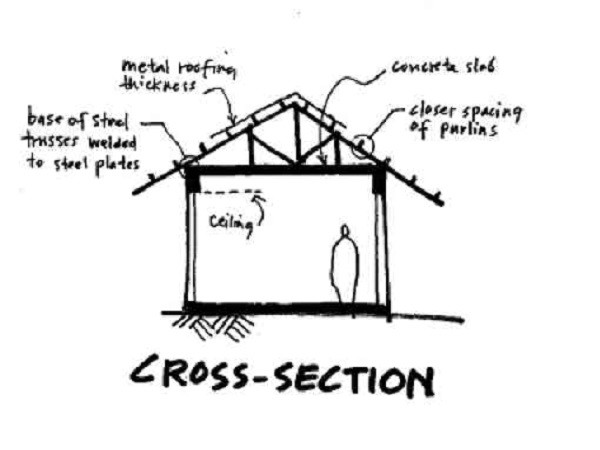
WHETHER wooden or steel structural framing is used for the roof trusses or rafters, it is vitally important to anchor these to load-bearing components of the house. Architect Amado de Jesus
Our country is visited yearly by about 20 to 24 tropical cyclones. Many Filipinos are aware of this and yet every year we witness roofs that are blown away during typhoons due to poor design and substandard construction methods and materials.
Supertyphoon “Yolanda” had winds blowing at 315 kilometers per hour, way beyond what is specified in the building code. To make matters worse, it generated a storm surge that literally wiped out large communities along the coastline.
Many experts now strongly recommend rebuilding communities away from the coastline and low-lying areas. This will require not only massive funds but the political will to get the job done properly and swiftly. Still, others suggest rebuilding in the same areas but with proper adaptation measures. Whatever strategies are implemented, this is the proper time to get the assistance of our local environmental and urban planners who are familiar with the site conditions and the needs of our people.
For those in areas far from the coastline and in relatively high elevation, there are still many things to consider in making their houses typhoon-resistant.
Most important protection
The roof is the most important protection of our house from the rain and the wind. The most common type of roofing designs are the hip roof and gable-end roof.
The hip roof, also known as cuatro aguas, is more aerodynamic and more wind resistant compared to the gable or dos aguas, which is a double pitched roof.
The wind flows smoothly over a hip roof, whichever direction it comes from. In contrast, a gable roof has a higher probability of being damaged if the wind hits the roof at a wrong angle.
In the final analysis, whether hip roof or gable roof is adopted, what matters is the way the roof components are constructed and put together as a whole roof system.
In the same way, whether wooden or steel structural framing is used for the roof trusses or rafters, it is important to anchor these to load-bearing components of the house.
Properly welded
Let’s start with the base of the steel trusses. This structural part must be properly welded to steel plates which have steel bolts anchored to the roof beams. This very important detail is often overlooked by some workers especially for low budget houses with disastrous results, such as whole roofs being blown away by a strong typhoon.
Next comes the purlins, on top of the trusses. Purlins are the roof parts in direct contact with the metal roof sheets. Structural engineers are now saying that for greater wind resistance these purlins must be spaced closer. The standard spacing is usually 24 inches but they now recommend a closer spacing of 16 inches. Closer spacing simply means more screws to hold the roof sheets down.
Diagonal braces are also placed between trusses to further strengthen the roof system.
The standard metal roofing thickness is now 26 gauges but some structural engineers now recommend a thicker sheet of ga. 24 to really make the roof typhoon-resistant.
One effective strategy to protect the house occupants from very strong typhoons is by providing a concrete slab just above the room or if the family can afford, the entire house. This space can also be used as an attic. With a concrete shell shelter, perhaps many lives and properties can be saved from future supertyphoons which are certain to come.
For comments or inquiries, e-mail amadodejesus@gmail.com